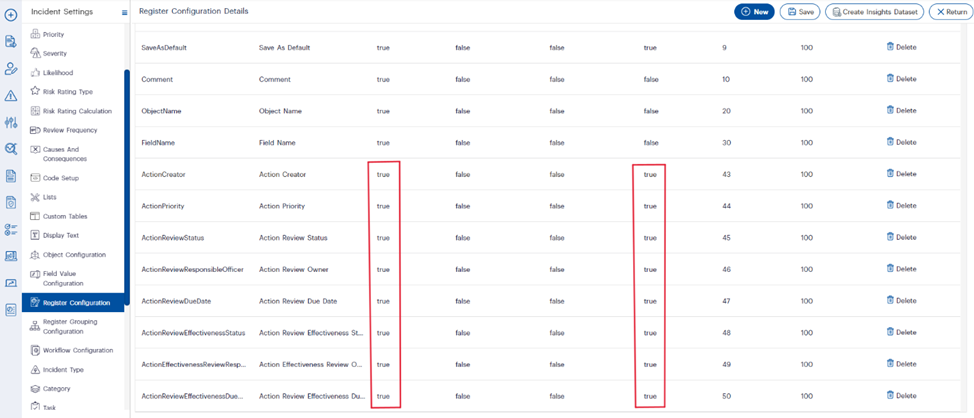Are you feeling frustrated by the ongoing challenge of dealing with incomplete data, leaving you without a clear understanding of what is happening during incident management? It can often feel like trying to solve a puzzle when crucial pieces are missing. However, there is no need to lose hope just yet!
In this blog post, we will explore two significant upgrades in Camms.Risk Incident Management that promise to simplify your work - Conditional Fields and Action Fields within the Incident Action Functionality. These enhancements are designed to address the issues of inconsistent data, unclear action ownership, and limited visibility into the overall process.
If you are keen to understand how these improvements can transform your approach to incident management, please continue reading. We will explain what these upgrades are, why they are important, and who will benefit the most from them. By the end of this post, you will see how these developments can change your incident management challenges into victories, allowing you to tackle obstacles with confidence and clarity.
Understanding Conditional Fields and Action Fields
Conditional Fields in Incident Workflows
The introduction of Conditional Fields in the Incident Workflows represents a significant step forward in customising incident management systems to better serve organisational needs. These fields can be configured to be visible, hidden, mandatory or optional based on specific conditions during different phases of incident management. This capability is enabled through the Incident Settings where administrators can define conditions under which certain fields reflect this behaviour.
The flexibility provided by Conditional Fields ensures that the data captured during incident reporting is tailored to the severity and type of the incident, enhancing data quality and ensuring relevant information is collected efficiently.
 Figure 1.1: Conditional Mode Settings in Field Configuration Details
Figure 1.1: Conditional Mode Settings in Field Configuration Details
 Figure 1.2: Field Value Configuration area - Mandatory tab
Figure 1.2: Field Value Configuration area - Mandatory tab
 Figure 1.3: Mandatory Condition applied for Incident severity field
Figure 1.3: Mandatory Condition applied for Incident severity field
 Figure 1.4: Before value change on Priority field
Figure 1.4: Before value change on Priority field
 Figure 1.5: After value change on Priority Field
Figure 1.5: After value change on Priority Field
Action Fields in Incident Action Register
Similarly, the newly introduced Action Fields functionality zeroes in on incident management actions, including Action Priority, Action Review, and Action Review Effectiveness. These fields allow incident users to view, sort, and filter action records, thus enhancing transparency and accountability in incident action management.
These fields are configured within the Incident Settings to be visible and searchable, ensuring that users can access and utilise these details effectively during incident reviews and follow-ups.
 Figure 2.1: Newly added fields made visible and searchable
Figure 2.1: Newly added fields made visible and searchable
 Figure 2.2: Newly added fields in the Incident Action Register
Figure 2.2: Newly added fields in the Incident Action Register
 Figure 2.3: Newly added fields in the filter of Incident Action Register
Figure 2.3: Newly added fields in the filter of Incident Action Register
 Figure 2.4: Screen of MQU (My Quick Update) with the Fields
Figure 2.4: Screen of MQU (My Quick Update) with the Fields
Why These Features Matter
The Conditional Fields streamline the incident reporting process by ensuring that only relevant data is captured based on the specific circumstances of an incident. This not only improves the accuracy of the data but also reduces the time required to fill out incident reports. For instance, if an incident is marked with a high priority, certain fields, such as ‘Severity’, can be configured to become mandatory, ensuring critical information is not overlooked.
The introduction of new Action Fields enhances the management of actions derived from incidents. By allowing detailed reviews and tracking of action priority and effectiveness, these fields support a more structured and effective approach to incident resolution and prevention.
Who Benefits?
The primary beneficiaries of these enhancements are Incident Administrators and users involved in the incident management process. Incident Administrators benefit from more control over the incident reporting process, enabling them to configure the system to meet specific organisational needs. Regular users benefit from a more streamlined, efficient, and user-friendly experience that allows them to focus on the critical aspects of incident management without being overwhelmed by irrelevant data fields.
What’s in It for You?
For organisations looking to enhance their incident management capabilities, these features offer significant advantages:
- Improved Efficiency: Automated conditions and tailored action fields reduce manual data entry and increase the speed of incident processing.
- Enhanced Accuracy: Conditional fields ensure that the information collected is directly relevant to the specific type of incident, reducing errors and improving data quality.
- Greater Transparency: With detailed action fields, all stages of incident action management are traceable, enhancing accountability and transparency within the organisation.
Conclusion
The addition of Conditional Fields and new Action Fields to the Incident Action Functionality represents a notable advancement in incident management technology. By embracing these features, organisations can achieve a more responsive, efficient, and effective incident management system, ensuring that both the visibility and management of incidents are enhanced. As the landscape of incident management evolves, staying updated with such enhancements will be key to maintaining a robust and effective incident response framework.
Need more help or personalised guidance with configuring these settings? Feel free to schedule a virtual consulting session through Camms.College.
Dive deeper into Conditional Fields, Action Fields, and other essential enhancements by registering for our upcoming webinar: Action and Conditional Fields within Camms.Risk Incident Management
For detailed information on Conditional Fields and Action Fields in Camms.Risk Incident Management, please refer to the release notes.
Join the Camms Community for insightful discussions on incident management. Connect with experienced experts and fellow users to explore the platform and its features in-depth.
















